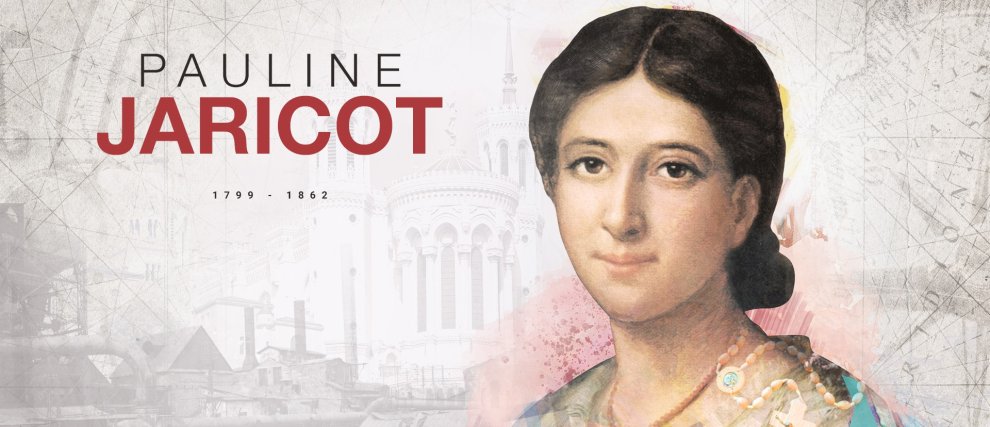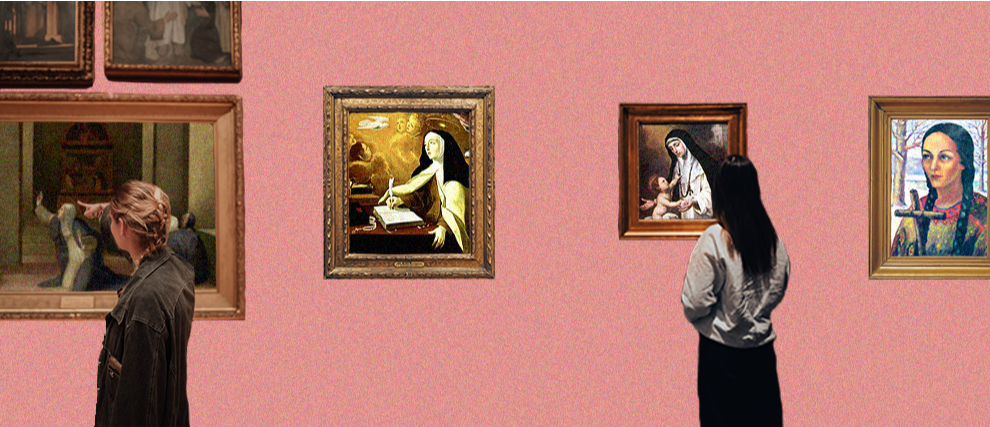Madame Guyon: Life, Works, and Quotes
Madame Guyon was a French Catholic lay mystic of the 18th century. She was very pious and was guided, all her life, by the "pure love" of Christ. A selfless, uncorrupted, unconditional and endless divine love. Madame Guyon gave teachings to those around her. She had thus formed a small group of disciples and had even taught at the Saint-Cyr boarding school, run by Madame de Maintenon. She wrote a considerable number of works on prayer, on passages of the Bible and on the teachings of Christ.
Biography of Madame Guyon
Madame Guyon was born on April 13, 1648 under the name Jeanne-Marie Bouvier, in Montargis. Her family was of minor nobility; her father, Claude Bouvier, was lord of La Motte and Vergonville and a master of requests (holder of a high judicial and administrative function). In her adolescence, she was marked by the works of Saint Francis de Sales and Saint Jane de Chantal. She decided to take the latter as her model.
Jeanne-Marie was married at sixteen to a man who was thirty-eight, Jacques Guyon du Chesnoy. He was a very wealthy man. They had five children together; only two sons and one daughter reached adulthood.
At nineteen, she met the Franciscan Archange Enguerrand who awakened Madame Guyon to a richer and deeper interior life. She then told him of her difficulties in praying alone. The religious man replied to her: "It is, Madame, that you seek outside what you have within. Accustom yourself to seeking God in your heart, and you will find Him there." She then met Mother Geneviève Granger, prioress of the Benedictines of Montargis, who became her advisor. Later, in May or June 1671, she met Father La Combe, a member of the Clerks Regular of Saint Paul, also called Barnabites. All these encounters contributed to the awakening of her faith and her interior life. The same year, on September 21, thanks to Geneviève Granger, Jeanne-Marie Guyon met Jacques Bertot, a member of the Norman mystical circle of the Hermitage of Caen and confessor at the Abbey of Montmartre in Paris. The latter quickly became the mystical director of Jeanne-Marie.
Widowed at twenty-eight, Madame Guyon found herself at the head of a vast fortune. Generous, she made donations to associations in order to "work for the salvation of [her] neighbor". After the death of Jacques Bertot, it was Father La Combe who became the new spiritual director of Jeanne-Marie. She thus discovered that her own spiritual radiance allowed her to "transmit to others something of [her] interior state." She discovered more and more the strength of prayer and silence in order to speak to the Lord.
While traveling in Haute-Savoie, Jeanne-Marie spent two years in Thonon, in an Ursuline convent. She also founded a hospital there with the help of Father La Combe. It was also at this time that she began to write. These writings were immediately very successful; she met laypeople, clerics, and Carthusian nuns with whom she discussed various religious subjects, which inspired her subsequent works, notably Moyen court et très facile pour l'oraison (Short and Very Easy Method of Prayer) and Explications de la Bible (Explanations of the Bible). She also wrote, in 1684, Moyen Court which would inspire three Carthusian convents to modify their prayer practices after reading this work. But this did not please everyone; the General of the Carthusians, Innocent Le Masson, wrote a book in 1692 intended to replace the Moyen court in the convents of his order. Jeanne-Marie Guyon founded a new hospital in 1686 in Verceilli, in the Italian Piedmont, still with the help of Father La Combe. It was from the bishop of this city that Madame Guyon discovered Quietism (it is a mystical and spiritual movement within Christianity that emerged in the 17th century, mainly among Catholics).
In 1687, Jeanne-Marie published her Cantique des Cantiques de Salomon (Song of Songs of Solomon) and this was quite unprecedented. Indeed, at that time, women did not have access to works of theology and were not to meddle in these subjects. Women who had visions were recognized and accepted as it was a grace from the Lord, but they were not to teach a way of praying to God. She was accused of heresy for this on January 29, 1688 and was confined in the Visitandine convent on Rue Saint-Antoine. She was freed thanks to the intervention of Madame de Maintenon, who was very fond of her, with Louis XIV who wrote a lettre de cachet on September 13. Shortly after the creation, in 1686, of the Maison royale de Saint-Louis in Saint-Cyr by King Louis XIV at the request of Madame de Maintenon, Jeanne-Marie moved there. She recruited disciples there and made increasingly long stays. She remained there for almost four years. Unfortunately, she was dismissed on May 2, 1693, based on false accusations. In order to clear her name, Madame Guyon then contacted Bishop Bossuet to whom she presented all her works so that he could read them and judge whether or not she was guilty of the faults of which she was accused (notably Quietism). The bishop read them, examined them, and after a few months declared that Jeanne-Marie was "more extravagant than guilty."
After staying for six months, starting in January 1695, at the Sainte-Marie convent of the Visitandines in Meaux, Jeanne-Marie returned to Paris, then went to Bourbon. She was at the heart of a storm. Indeed, between 1694 and 1695, many conferences took place, notably in Issy, to determine whether Quietism was a heresy or not; many bishops and important figures of the 17th century took part, even Jansenists and Jesuits. Madame Guyon therefore kept a low profile, although she was not found guilty of anything. Unfortunately, this calm was short-lived for the mystic because she was incarcerated on December 27, in the dungeon of Vincennes.
Christianity was totally disturbed by the recent events. Several schools of thought opposed each other, notably the Jansenists and the Jesuits. This marked a real turning point.
Madame Guyon was transferred in 1696 to a convent in the Vaugirard quarter, then on June 4, 1698, to the Bastille. No one knows the precise reasons for this incarceration. La Reynie, the lieutenant general of police, investigated but found nothing; his successor, d'Argenson, did the same but it all led to nothing. Jeanne-Marie was finally released on March 24, 1703, at the age of fifty-five. She went to live with her son at the Château de Diziers, in the Blésois region. Then, from 1706, she lived in Blois. In the meantime, her works began to be published. Madame Guyon rendered her soul to God in Blois, on June 9, 1717.
Her writings, her infinite love, and her total abandonment to God influenced a great many Christian theologians and spread strongly from the 18th century onwards.
Works of Jeanne-Marie Bouvier de La Motte
Douze discours spirituels (Twelve Spiritual Discourses), coll. « Petite collection d'auteurs mystiques », Paris, Bibliothèque Chacornac, 1903.
Moyen court et très-facile de faire oraison que tous peuvent pratiquer très aisément (Short and Very Easy Method of Prayer That All Can Practice Very Easily), Lyon, Briasson, 1686.
Le Cantique des Cantiques de Salomon interprété selon le sens mystique et la vraie représentation des états intérieurs (The Song of Songs of Solomon Interpreted According to the Mystical Sense and the True Representation of Interior States), [by Madame Guyon, according to Antoine-Alexandre Barbier], Lyon, Briasson, 1688.
Discours chrétiens et spirituels sur divers sujets qui regardent la vie intérieure, tirés la plupart de la Sainte Écriture (Christian and Spiritual Discourses on Various Subjects Concerning the Interior Life, Mostly Drawn from Holy Scripture), Paris, Libraires associés, 1790.
La Vie de madame J.-M. B. de La Mothe Guion, écrite par elle-même (The Life of Madame J.-M. B. de La Mothe Guion, Written by Herself), Amsterdam, La Pierre, 1720, 3 vols.; reissued identically, London, Dutoit, 1790; Paris, Libraires associés, 1791.
La Vie par elle-même et autres écrits biographiques (The Life by Herself and Other Biographical Writings), critical edition with introduction and notes by Dominique Tronc, literary study by Andrée Villard, coll. « Sources classiques », Paris, Champion, 2001.
Lettres chrétiennes et spirituelles sur divers sujets qui regardent la vie intérieure ou l'esprit du vrai christianisme (Christian and Spiritual Letters on Various Subjects Concerning the Interior Life or the Spirit of True Christianity), Cologne, Poiret; [Amsterdam], La Pierre, 1717 and 1718; new edition enriched with the secret correspondence of M. de Fénelon with the author, London, Dutoit, 1767 and 1768.
Madame Guyon et Fénelon : la correspondance secrète, avec un choix de poésies spirituelles (Madame Guyon and Fénelon: The Secret Correspondence, with a Selection of Spiritual Poetry), presented by Benjamin Sabler and Étienne Perrot, Paris, Dervy, 1982. Partial, non-critical edition.
Correspondance (Correspondence), ed. Dominique Tronc, coll. « Correspondances », Paris, Champion.
Les Torrents et Commentaire au Cantique des Cantiques de Salomon (The Torrents and Commentary on the Song of Songs of Solomon), Grenoble, Millon, 1992.
Torrents spirituels (Spiritual Torrents), partial publication in Les Opuscules spirituels de madame J.-M. B. de La Mothe Guyon, Cologne, Poiret; [Amsterdam], La Pierre, 1704; publication in Les Opuscules spirituels, Paris, Libraires associés, 1790, 2 vols.
Continue your prayer with Madame Guyon thanks to Hozana!
Discover wonderful prayer communities thanks to Hozana!
Every morning, by a priest or a pastor. This prayer time invites you to take time for meditation and ends with an Our Father.

